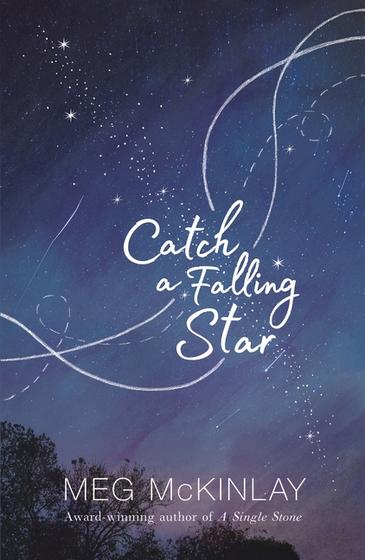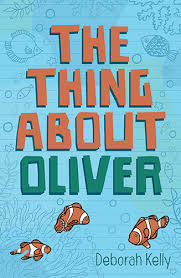|
Skylab. Memories… Like McKinlay’s central character, Frankie, I was 11 when the anticipation of Skylab hurtling to Earth consumed the media and lunchtime conversations. One afternoon, I was surprised and confused to arrive home later than my older brother, and demanded to know why he was home so early. “Didn’t you hear? Part of Skylab fell on my school, and we were all sent home.” I heard about chunks of metal raining down, injured kids, TV news crews and the evacuation of his immense school. I couldn’t wait to get to school the next day to discuss the huge news in great detail with my friends. You can imagine my chagrin at being called variations of liar and prankster. Skylab was still in the sky, Sydney was never really in danger, and my brother had spun a tale almost as believable as Meg McKinlay’s.
There was so much I loved about this book. The time period was captured perfectly – right down to Storm Boy as the class text. There was a seamless layering of love, grief, change, science, magic, relationships, communication and hope, and I was once again my 11 year old self navigating friendships (is this a fight?), school work and evolving family dynamics without the benefit of decades spent on the planet. The characters rang true, and the use of imagery and symbolism was powerful, yet understated. This would be a perfect book for a class study, as there is so much to unpack. Some ideas are below:
0 Comments
Bren MacDibble is no stranger to the CBCA shortlist. In 2018, her novel How to Bee took home the Book Of The Year gong, and I’m not surprised that The Dog Runner is in this year’s shortlist.
MacDibble is a master at creating worlds just out of reach of our reality. (Having said that, living through a pandemic makes me question how far off these scenarios really are…) The narrator, gutsy Ella, and her half-brother Emery with a host of big, strong and loyal canine companions, undertake a perilous journey of survival. First things first: this is a heart-stopping, fast-paced, roller-coaster of a read, and highly recommended for upper primary students. That’s a good enough reason to pick it up. However, as I can’t help myself, the possibilities for library and classroom use are immense.
I've only just started my annual exploration of the CBCA shortlist in the Younger Readers category for 2020, and if this one is anything to go by, the standard is really high! Kelly has managed to unpack many authentic struggles in this novel, and has accomplished this with sensitivity and honesty.
As a teacher-librarian, I was excited by the many possibilities this book presents. There are so many levels that can be explored - contrasting the point of view of Oliver's sister, mother and aunt and their interactions with Oliver, not to mention considering what life must be like for Oliver himself; the clever use of setting and imagery; and the recurring theme of fish and ocean life - being the observed and being the observer. As a reader, it was satisfying and thought-provoking. Kelly alludes to the gamut of challenges faced by the family - emotional, financial, social, just to name a few, all with a delicate touch. There was a well-balanced mix of tension and humour culminating at the end, resulting in a defining book of resilience and love. Crazy days. Plain and simple. Covid-19 upended best-laid plans across the globe, taking lives and livelihoods, while redefining our expectations and understandings of 'normal'.
By the end of Term 1, our school was moving to online education and teachers spent the Easter holidays upskilling and preparing for a different learning environment. I have found the following tools invaluable, and hope to integrate into my teaching practice even as restrictions ease and we return to familiar face-to-face experiences. Zoom Talk about a learning curve! The photo above is of my first encounter with zoom - and it was with a Kindergarten class!! (No wonder I look stressed...) After a couple of lessons, I learnt that library lessons need a predictable format with younger children - story, discussion, activity. The trick with zooming - less is more. When all lessons moved online, and I no longer had access to my library collection, I sourced stories online. Storybox Library This Australian subscription-based website is a gem filled with imple reading of stories by authors, illustrators, actors, librarians and children's book lovers. There are a wide variety of Australian books here, along with teaching notes and student activities. Stories can be sorted by author, illustrator or theme, and there is an impressive collection of Indigenous stories as well. Flipgrid I am a Flipgrid convert. Simple and intuitive in design, this website/app can be used for a wide range of purposes including formative and summative assessment. I tend to use it as a quick reflection tool. Students record themselves and can share and comment on each other's work. It is great training ground for ethical and beneficial use of social media, and is a worthwhile tool when considering the importance of digital footprints. Padlet This is another simple and effective tool for collaboration and structuring of ideas. I have used it for Recommended Reads, with girls sharing their recommendations, picture of the book and a brief sentence or two about why they enjoyed it. We add to it weekly, and when we can return to the library, we will have a wall of book recommendations to kick off some enthusiastic borrowing. Choosing a beginning-of-year library book for K-2 students isn’t as easy as it sounds. Having been a teacher-librarian for more than a few years (!), it is tempting to revert to the tried and true books to promote library love. Some of my favourites over the years have been Library Lion, The Shelf Elf, Delilah Darling is in the Library, and Parsley Rabbit’s Book about Books. Library love, library rules, books about books – all essential in establishing the library as a wonderful place (the best place!) to find books which will let the imagination soar.
This year, I read Luna Loves Library Day with Kindergarten, but I think I might use it with Year 2 in future years. The pictures were delightful, there was a great dose of library love, but it could have been more fully explored with slightly older children. Without preaching, there was seamless integration of diverse characters, separated families and a sense of community. I also loved the ‘book within a book’ which could be a fun creative activity to incorporate into Year 2 lessons. In the future, rather than use this at the start of the school year, I will use this book heading into holidays, where I can encourage students to visit their local libraries and share the library love around. Year 2 are learning about Sharing the Planet, and during library we are exploring this idea through selected works of Oliver Jeffers.
To kick the term off, I showed the girls a video of Oliver Jeffers explaining the origins of the book, namely an introduction to the world for his new baby son. Apart from an opportunity to listen to his delightful accent (!), the video provided a great stimulus for discussion. The girls brainstormed the most important things a newcomer (baby, alien etc) to our planet would need to know, and these ideas were recorded for future reference. Interestingly, many girls were preoccupied with the need for a newcomer to know where they lived, who their family was and how to make friends. This egocentricity is an age-appropriate response, and demonstrates a limited world view and need for security. However, others were more interested in demonstrating their own knowledge of facts and features of the planet itself. We pored over every page of this book. Jeffers managed to include an incredible amount of detail and factual information throughout without cluttering the pages. However, the lasting message of the book is a common thread through many of his books - the centrality of kindness. In future weeks, we will be exploring many of the pages in further detail, researching and sharing ways in which we can care for this planet and those who inhabit it. Although Book Week is done and dusted for another year, I am still considering the many and varied ways the shortlisted books can be 'put to good use'.
Today, my Kindergarten class revisited The Dress-Up Box by Patrick Guest and Nathaniel Eckstrom, by literally dressing up. I brought in a range of much-loved dress-ups from home, and gave each student a token dress-up eg pirate hat, unicorn horn, tiger tail, wig etc, and placed the girls in groups of four. The dress-ups and groups were assigned randomly, and the girls were asked to think about who or what their character was, and then to consider a simple storyline that brought the weird assortment together. I was astonished at how enthusiastic all of the students were, including the girls who are usually more reticent in joining activities, Yes, it was dress-ups. Yes, it was play. And it's true, not all groups worked completely cooperatively, However, the learning was powerful. After each group had performed, I asked each character a few questions (akin to the hot seat idea), and the girls had to really reflect on their character. I also asked some groups what might happen next in their story. These were young Kindergarten girls who were able to create characters and storylines, and see the relationship between their plays and stories that are read aloud. They reluctantly left the library, but were proudly calling themselves 'story-authors'. |
Categories
All
If browsing, remember to click the arrow at the bottom of the page for more content.
|






 RSS Feed
RSS Feed
